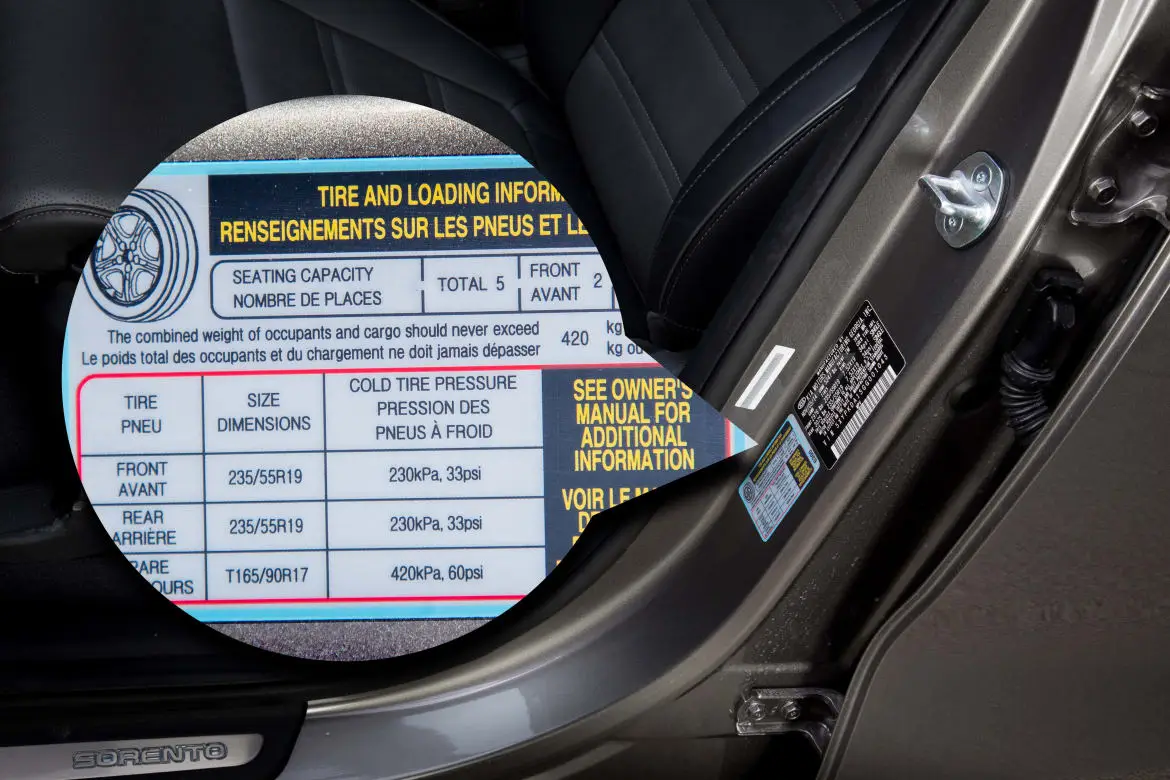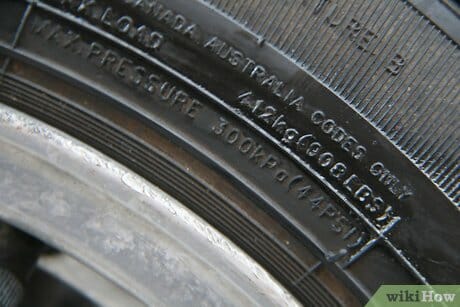How to Check How Much Air Your Tire Needs
If you’re like most people, you probably don’t think much about your car’s tires until there’s a problem. But checking your tire pressure is an important part of routine maintenance that can save you money and keep you safe on the road. Here’s how to do it:
First, find out what the correct tire pressure is for your vehicle. This information is usually located on a sticker inside the driver’s door or in the owner’s manual. Once you know the proper pressure, use a tire gauge to check each tire.
If one or more of your tires is low, add air until it reaches the correct level.
- Make sure your vehicle is parked on a level surface and the emergency brake is engaged
- Locate the valve stem on your tire
- It will be a small metal cap on the outer edge of the wheel
- Unscrew the cap from the valve stem and place it somewhere where it won’t get lost
- Use a tire gauge to check how much air is in your tire
- Most gauges have a small lever or knob that you push or pull to get a reading
- Compare the reading on the tire gauge to the recommended PSI for your tires (this can usually be found in your vehicle’s owner’s manual)
- 6 If your tires are low, use an air compressor or hand pump to add air until you reach the recommended PSI level
What Is The Correct Tire Pressure For Your Car? Fast & Easy!
How Do I Know How Much Air to Put in Tires?
It is important to know how much air to put in your tires for a number of reasons. The correct tire pressure helps improve gas mileage, provides better handling and braking, and extends the life of your tires.There are a few different ways to determine how much air to put in your tires.
One way is to consult your car’s owner’s manual. The manual will have specific recommendations for tire pressure based on the make and model of your vehicle. Another way to determine the correct tire pressure is to look for the sticker inside the driver’s door frame.
This sticker should list the recommended tire pressure for your specific vehicle.If you can’t find either of these sources, or if you want a more accurate reading, you can use a tire gauge to measure the air pressure in your tires. Once you know the current air pressure in your tires, you can add or remove air until it reaches the recommended level.
It is best to check your tire pressure at least once a month, and before long road trips.Overinflated or underinflated tires can both cause problems. Overinflated tires can make steering difficult and lead to premature tread wear on the outside edges of the tires.
Underinflated tires increase rolling resistance, which lowers gas mileage and makes it harder to handle bumps in the road. In extreme cases, underinflated tires can overheat and burst. That’s why it’s important to maintain proper tire inflation levels at all times!
How Do I Know If I Put Enough Air in My Tires?
If you’re unsure if you’ve put enough air in your tires, there are a few ways to check.First, try the penny test. Insert a penny into your tire’s tread upside down.
If Abraham Lincoln’s head is visible, you have enough tread depth and don’t need to add more air.If you don’t have a penny handy, you can also do the hula hoop test. Place a hula hoop over the center of your tire.
If it doesn’t touch the ground on any side, your tire has enough air.Another way to check is by using a tire pressure gauge. You can find these at most gas stations or auto stores.
Simply insert the gauge into the valve stem on your tire and see what the reading says. Depending on the type of gauge, it will either give a numerical reading or use color-coded markings that indicate whether your tires are underinflated (green), properly inflated (blue), or overinflated (red).If your tires are underinflated, add air until they reach the recommended PSI for your car model (you can usually find this information in your owner’s manual).
If they’re overinflated, let some air out until they’re at the proper level.
Is 40 Psi Too High for Tires?
No, 40 PSI is not too high for tires. In fact, most passenger car tires require between 32 and 36 PSI. The only time you might want to consider lowering the pressure is if you are driving in snow or on sand.

Credit: www.cars.com
How to Check Tire Pressure Without Gauge
One of the most important things you can do to maintain your car is to keep an eye on your tire pressure. Unfortunately, checking tire pressure can be a bit of a pain, as you need to find a gauge and then crouch down next to each tire in turn. However, there’s an easy way to check your tire pressure without using a gauge.
Here’s what you’ll need:A penny or other small coinAn inflated balloon
Instructions:1. Inflate the balloon until it is about the size of a basketball. Make sure that the knot is tied tightly so that no air escapes.
2. Place the balloon on the ground and put the penny on top of it. Slowly release some air from the balloon until the penny just starts to roll off.3 If the penny rolls off with very little effort, then your tires are properly inflated.
What Should Your Tire Pressure Be in the Summer?
If you’re like most people, you probably don’t think much about your car’s tires. But did you know that the air pressure in your tires can have a big impact on how your car performs? In fact, tire pressure is one of the most important factors in determining fuel economy.
The optimal tire pressure for your car will vary depending on the season. In general, though, you should aim for a tire pressure that is about 10% higher than what is recommended by the manufacturer during the summer months. This will help to improve fuel economy and prevent premature wear on your tires.
Of course, it’s important to check your tire pressure regularly to make sure that it is at the proper level. A good rule of thumb is to check it once a month or before any long road trip. If you find that your tires are low on air, simply use a portable air compressor to add more air until they reach the desired level.
Is 40 Psi Good Tire Pressure
Maintaining the proper tire pressure is important for several reasons. It can improve your gas mileage, make your tires last longer, and help keep you safe on the road. So what is the right tire pressure for your car?
Most passenger cars will have a recommended tire pressure of around 32 psi to 35 psi in the front tires and around 30 psi to 32 psi in the rear tires. If you have a light truck or SUV, your recommended tire pressure may be higher, around 35 psi to 40 psi in the front tires and 33 psi to 37 psi in the rear tires. Of course, it’s always best to consult your owner’s manual to be sure.
So what happens if your tire pressure is too low? Your tires will flex more as you drive, which causes them to wear out faster. You may also notice that your car doesn’t handle as well as it should.
And if you’re driving on underinflated tires in cold weather, they can actually freeze and become brittle, increasing the risk of a blowout. On the other hand, if your tire pressure is too high, it can cause premature tread wear and make your ride less comfortable.To check your tire pressure, use a reliable digital gauge (not one from a gas station air pump) and remove any dirt or debris from the valve stems before checking.
Once you know what PSI (pounds per square inch) each tire should be inflated to, add or release air until you reach that number. Check all four tires at least once a month and before long trips for best results.
Conclusion
It’s important to keep your tires inflated properly to ensure a smooth ride and good gas mileage. Here’s how to check how much air your tire needs.First, find the recommended PSI (pounds per square inch) for your tires.
This information can be found in your car’s owner’s manual or on a sticker inside the driver’s side doorjamb. Once you know the proper PSI, use a tire gauge to check the air pressure in each of your tires. If any of them are below the recommended level, add air until they reach that level.


